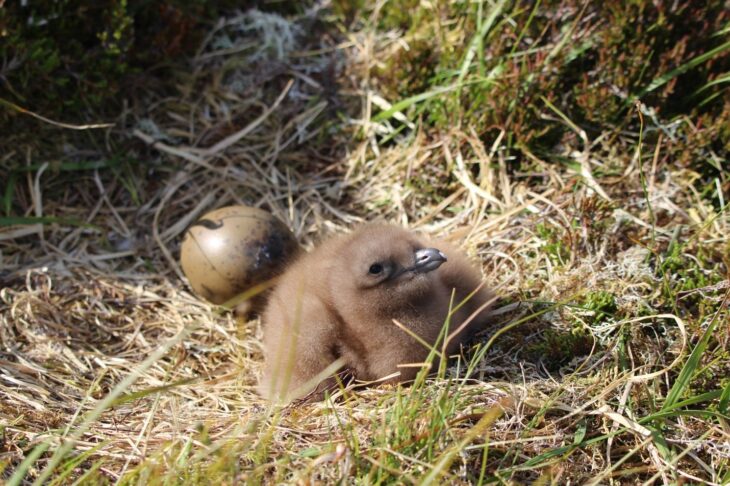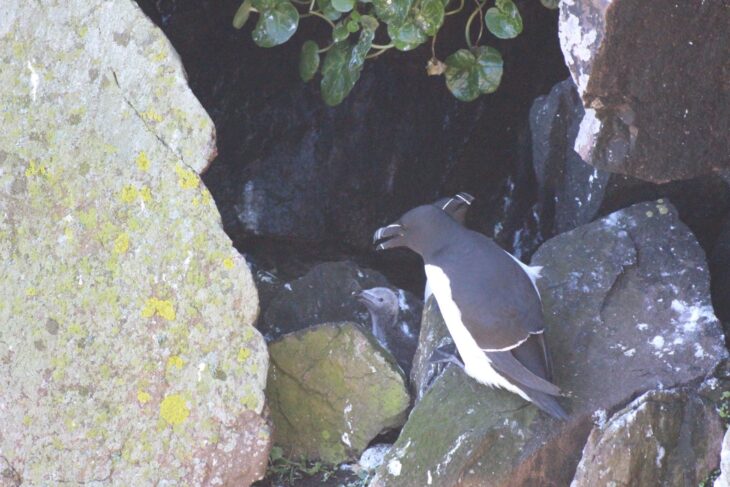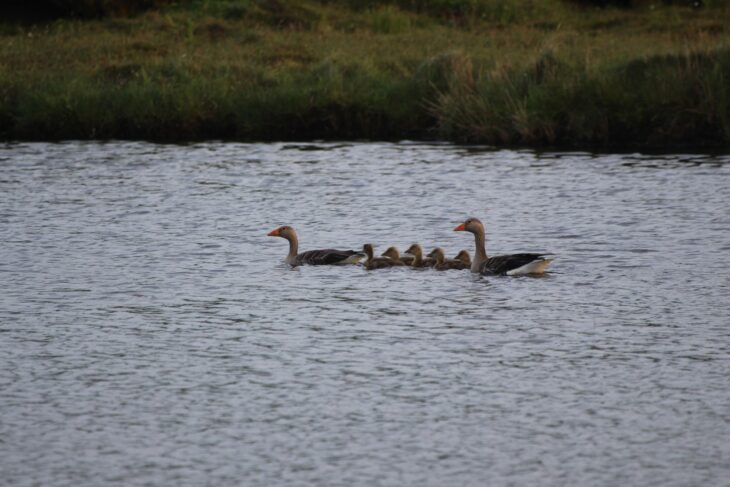Chick season on Handa Island
June has been a busy month for us all on the island, heading out to the cliffs to check on the many eggs of the guillemots and kittiwakes, or venturing into the vast swathes of heather to look for feisty skua chicks.
Over the last few months we have watched the eggs appear across the island. They range from the electric blue of the guillemot, startlingly bright on the narrow cliff edges, to the larger speckled brown eggs of the skuas, hidden in the heather.
Not all of the eggs last long enough to hatch – they provide a valuable food source for some of the larger seabirds like the great skuas and the great black backed gulls. We see the remains of these eggs scattered around the reserve or brought back to us by curious visitors.
The great skua chicks and gulls hatched first. These little balls of downy feathers play an excellent game of hide and seek in the long grass.

We have been monitoring these nests, watching as each of the eggs hatch. You can tell when an egg is close to hatching when you hear the chicks inside tweeting and squeaking to announce their imminent arrival. There is something very special and somewhat sentimental about watching a egg hatch, starting with a tiny hole in the shell pecked open so the chick can get its first glimpse of the world.
Many of the skua and gull chicks are quite large now and already show signs of the feisty adults they will become. Seemingly unaware of their cute and fluffy appearance, they snap and squeal angrily at anyone coming near their nest.

It has been quite wonderful over the last couple of weeks to see the nests on the cliffs filling up with little bundles of feathers. The first chicks to be seen were razorbills, poking their heads out from under their parents cosy feathers. The parents keep the small chicks well hidden from view, keeping them warm out of the blustery sea breeze. This in turn keeps them away from the prying eyes of the predators flying above, but it does make it terribly difficult to tell when the eggs first hatch!

As the chicks grow bigger, they grow more confident and can now be seen poking their head around their parents or go for a little wander along the cliff ledge. Their attentive parents keep them well fed and defend them from predators until they are ready to make the leap (literally) and leave the nest.
The kittiwakes have also been hatching, and many hundreds of nests are suddenly full of hungry mouths to feed. These are the most successful of the gull species on the island, and they line the ledges of the Great Stack with their large nests, giving us a great view of adorable young.

But of course, Handa is home not only to our seabirds, but a huge variety of other bird species that are in the middle of a baby boom. Our lucky visitors get plenty of sightings of eider ducklings, greylag goslings and red grouse chicks. We are particularly fond of the greylag geese, the first family of the species here in many years. These fierce geese make excellent parents, fending off the skuas around them, and successfully keeping their young safe for several weeks despite being surrounded by hungry predators. We continue to keep an eye on this family and are delighted to see the five goslings grow bigger and fiercer every day.

Heather Bodie, Handa Volunteer
Help protect Scotland’s wildlife
Our work to save Scotland’s wildlife is made possible thanks to the generosity of our members and supporters.
Join today from just £4 a month to help protect the species you love.
Preface
June has been a busy month for us all on the island, heading out to the cliffs to check on the many eggs of the guillemots and kittiwakes, or venturing …
